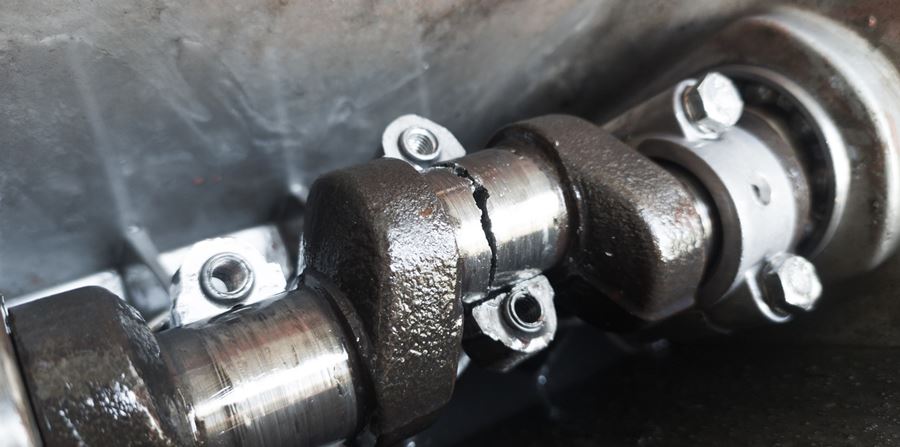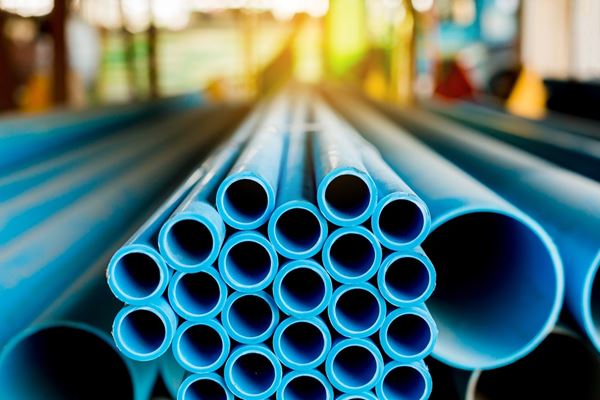Navigating the Complexities of Material Failures

As modern lifestyle utilizes various materials, such as plastics, metals, ceramics, and their composites and designers continue to stretch the envelope of how to engage these materials in new applications, there are bound to be occasions where the materials don’t live up to their projected expectations.
Material failures occur regularly in our daily lives, and it is natural to ask, “Why can’t designers specify the materials and manufacturers fabricate the parts properly for the intended applications?” Well, in real life, it is through the iteration of prescribing the materials of interest, analyzing how the materials fail, and adjusting design specs that material developers and designers learn how to best use the new materials. So, understandably, failure analysis, in this cycle of iterative learning, is a crucial part of forensic science as there is much detailed information that can be extracted from the analysis. Today, we will touch on the complexity and intricacies of material failures and their analysis.
The Basic Principles of Material Failures
Fundamentally, material failures, at the macroscopic level, are determined by the magnitude of the imposed stress. Failures occur when the stress state of a material system or component exceeds critical stress. In solid mechanics, the stress-strain curve, which illustrates a material's deformation trajectory, prescribes the material’s deformation behavior when under stress. Most materials exhibit a linear range during initial deformation or stretching, where stress and strain correlate. Beyond a specific point, often referred to as yield or fracture, the material risks breaking, leading to permanent deformation.
Nominal stress is the overall applied stress on the material. Although material failures are primarily determined by the nominal stress, local stress, and residual stress are equally important. Local stress could be higher due to factors such as design, geometry, or dimension, known as stress concentrators. Residual stress is a result of the fabrication process and can be seen as a baseline offset. So, while nominal stress may be lower than the failure critical stress, there might have been local failure initiated due to elevated stress resulting from stress concentrators and/or residual stress.
Material Deformation Characteristics
With the stress-strain curve prescribing how a material behaves when under stress, there are commonly two extreme deformation-failure scenarios: brittle failure, where the material breaks within or shortly post the linear range, and ductile failure, where the material undergoes significant stretching before breaking. Coincidentally, brittle and ductile failure patterns frequently find typical examples in metals and polymers.
Metals, with crystalline structures, tend to exhibit high elasticity and can absorb energy and revert to their original shape once the load is removed. So, they tend to demonstrate a more proportional relationship, linearity, between stress and strain. Contrarily, due to polymers' microstructure, like a bowl of spaghetti noodles with each noodle representing a polymer chain, they display viscoelastic behavior. The viscoelastic nature of polymers, including both elastic and viscous properties during deformation as when the polymer chains were stretched, they may disentangle and slide against each other, often resulting in a ductile failure manner. In real life, materials tend to fail in a manner between extremely brittle and ductile patterns.
Fracture Surface Features and Common Failure Mechanisms
In addition to understanding the theoretical aspect of material deformation and failure, identifying key fracture surface features helps close our iterative learning loop about how a material behaves under stress, as many of the features help us reconstruct the cause and sequence of failure events.
As a side note, when it comes to failure analysis, one does not have to be a material expert to identify key fracture surface features as fracture features generally possess unique characteristics and are frequently comparable among different materials.
Fracture Surface Features
The first critical fracture surface feature is the initiation point. Failure initiation normally happens instantaneously, like an explosion event. Therefore, the fracture surface tends to be flat and smooth. Additionally, like explosions, the subsequent fracture propagation marks will naturally radiate outwards from the origin. Fracture propagation marks, such as radial, chevron, and river marks, will all point back towards the initiation point. So, when examining a fracture surface, the first thing to do is to trace the fracture propagation marks back to the origin of initiation, visually like tracing the rays back to the sun.
Once the initiation point is identified, one can begin to infer what might have happened. For example, if the initiation point is located on the outer surface of a component, then the fracture initiation is more likely due to surface damage, sharp corners, over-crimping, or exposure to UV or chemicals externally. If the initiation point is located on the inner surface of a component, the failure initiation is likely due to contact with incompatible chemicals and environmental factors, such as heat and pressure. If the initiation appears from within the component, then manufacturing defects, such as impurities, trapped air bubbles, or cracking due to shrinkage, could be the culprit.
Mechanisms of Failures
After the initiation point is identified, understanding the subsequent eventual failure mechanism is vital to comprehend what leads to the material failure. Overloading, fatigue, creep, and environmental are some common material failure mechanisms.
Overloading happens when the stress on an application exceeds the material's strength, often resulting in quick fracture surfaces. Overloading can be caused by over-tightening plastic connectors or using mechanical tools on parts designed for hand tightening. Inadequate radius and improper dimensions are common design flaws that can lead to local stress exceeding the critical level.
Fatigue, on the other hand, results over time from cyclic load, leading to local failure accumulation and sustained propagation. Due to its cyclic nature, fatigue failures are characterized by beach marks or striations observed on the fracture surface. It is, however, worth noting that polymers differ from metals due to their entanglements and bridging, which means one striation doesn't necessarily correspond to one loading cycle.
Creep, which involves the slow disentanglement of polymers, occurs when a material continues to stretch under a constant load. Therefore, creep usually manifests in failures associated with elongation and cross-section reduction.
Environmental failure, or environmental stress cracking (ESC) for plastics, is the result of the material coming into contact with incompatible chemicals in the presence of constant loading or, for metals, environmental agents that could cause corrosion/oxidation. ESC tends to show signs of degradation at the initiation points and is followed by crack propagation.
Factors to Consider in Diagnosing Material Failures
Material Selection
Material selection is without a doubt the number one task when it comes to developing any commercial products. On top of structural integrity requirements, application environment (likelihood of exposure to detrimental chemicals or not), expected life span, and overall cost target are the first level of considerations that will help define the probable material candidates. However, it is not unusual to see cases where the cost target overrides the structural integrity and application environment requirements. So, a not-so-unusual landmine to watch out for when dealing with field failure cases.
Material Design
Once the proper material is selected, then comes the part design. Achieving desired structural integrity in a component requires not only inherent material strength but also structural stiffness, which is geometry-dependent like wall thickness. On top of wall thickness, sharp corners can cause stress concentration and lead to failure at lower than target nominal applied stress. Consequently, proper radiuses to avoid sharp corners and proper bottom thread design for effective thread engagement are some of the seemingly trivial yet critical factors to look out for in a failed part.
Material Fabrication
After proper selection of material and appropriate design considerations, parts then get fabricated. Not surprisingly, proper fabrication process parameters will also impact the quality and end performance of the components. For example, some of the critical processing parameters for plastic injection molding are adequate raw material drying, molding temperatures, injection speed, mold design for efficient material flow path, mold cavity air venting, and cooling speed to minimize residual stress. For extrusion, temperatures for different process zones, proper screw elements configuration for materials to be processed, and extrusion speed are some of the important parameters to pay attention to. Localized stress concentration due to air entrapment associated with inadequate raw material drying or poor injection mold cavity air venting is regular issues encountered in injection molding. Therefore, signs of air bubbles, localized defects, and lower-than-projected material properties are always something to keep in mind when processing mistakes are suspected.
Material Installation
Lastly, even if everything associated with producing the parts has been handled correctly, installation errors could wipe out all the good efforts leading up to the final step of the project. Overtightening (or over-torquing) is the most common mistake encountered in field failure of plastic parts. Installers who are accustomed to installing metal fittings tend to apply the same rules in connecting plastic fittings, especially if the installation involves a male metal component threaded into a plastic female component. Failure at thread bases of the plastic components is the most observed field occurrence.
Another installation error involves accidental unintended exposure of plastic parts to detrimental chemicals. CPVC pipes coming into contact with anti-freeze agents or moisture mediation agents containing polyester or POE oil from heat exchangers are good examples of this category.
To sum up, a comprehensive understanding of material failure hinges on a thorough knowledge of solid mechanical principles, material characteristics, failure features, and eventual mechanisms. Addressing a material failure case necessitates a systematic and meticulous process. This process generally includes identifying the failure mode, pinpointing the root cause, and suggesting corrective measures. Utilizing apt investigative tools allows for root cause identification and corrective action recommendations. Various investigative tools like spectroscopy (FTIR, GC-MS), microscopy (optical, SEM), and mechanical testing are widely used in failure analysis to scrutinize the material's composition, microstructure, and mechanical properties. Together, the collective information aids in preventing future failures while enhancing material reliability and performance.
Our experts are ready to help.



